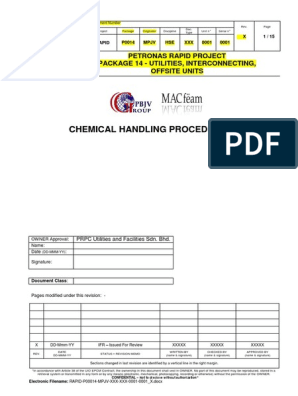100% found this document useful (1 vote)
564 views5 pagesDisposal of Pest Control Waste Risk Assessment
The document provides a risk assessment for the disposal of pest control waste. It identifies two main activities - disposal of pesticides and contaminated packaging, and disposal of biological waste such as dead animals. For each activity, significant hazards are identified along with potential consequences. Risk levels are determined and control measures are outlined to reduce the residual risk, such as wearing proper PPE, securely containing and labeling waste, and ensuring waste is disposed of properly by an authorized contractor according to local regulations.
Uploaded by
Lawrence adeleke OmisakinCopyright
© © All Rights Reserved
We take content rights seriously. If you suspect this is your content, claim it here.
Available Formats
Download as DOCX, PDF, TXT or read online on Scribd
100% found this document useful (1 vote)
564 views5 pagesDisposal of Pest Control Waste Risk Assessment
The document provides a risk assessment for the disposal of pest control waste. It identifies two main activities - disposal of pesticides and contaminated packaging, and disposal of biological waste such as dead animals. For each activity, significant hazards are identified along with potential consequences. Risk levels are determined and control measures are outlined to reduce the residual risk, such as wearing proper PPE, securely containing and labeling waste, and ensuring waste is disposed of properly by an authorized contractor according to local regulations.
Uploaded by
Lawrence adeleke OmisakinCopyright
© © All Rights Reserved
We take content rights seriously. If you suspect this is your content, claim it here.
Available Formats
Download as DOCX, PDF, TXT or read online on Scribd
/ 5













































































































